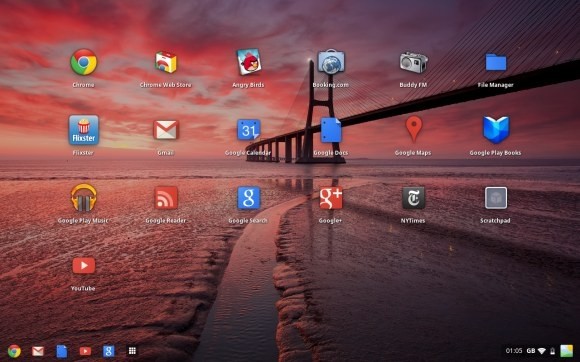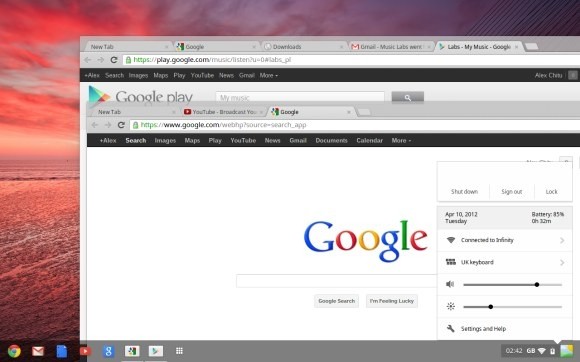Google is hoping to breathe new life into its browser-based operating system Chrome OS with a visual upgrade that makes it look more like a cross between Windows and OS X. The new "Aura" user interface marks a departure from the original idea of offering a single maximized browser window and nothing more, by allowing multiple overlapping windows instead and a few other features supporting the familiar desktop metaphor.
The fist thing you'll notice is a taskbar (or shelf, as Google is calling it) that stretches across the bottom of the screen an provides quick access to a bunch of web apps and offers at-a-glance system information such as battery state, network connections, and time and date – not unlike the one found in Windows. This shelf disappears when the browser window is maximized and reappears upon sliding the mouse pointer over it.

There's also a new app and bookmark launcher that serves the same purpose as Chrome's new-tab page only now it is presented with a grid of icons right on the desktop, rather like OS X's Launchpad.
All these shortcuts are still basically fancy links but now you can detach and re-attach tabs from the browser interface so you have more freedom to manage multiple windows and switch between them with the shelf. Also, windows can be resized by dragging any edge. Previously, you could have as many tabs and extensions as you liked, but they were always limited to the primary Chrome frame in maximized mode.

According to Google, Aura is a "user interface framework for Chrome UI" that offers "rich visuals, large-scale animated transitions and effects that can be produced only with the assistance of hardware acceleration".
The company also implemented multi-monitor support and better handling of compressed files and mentioned that Aura should "provide the foundation of a flexible windowing system and shell for Chrome and ChromeOS on a variety of form factors", suggesting that more Chrome OS announcements might follow.
Chrome OS was launched in late 2010 with emphasis on "speed, simplicity and security" hoping to ride on the success of its browser. Back then, Google also took some shots at Windows 7 for being bloated or providing more power than typical users need. Whether the latest changes are an admission of defeat or not, it's clear that the web-based operating system hasn't taken off as Google would have hoped for, so we can't be too surprised to see the company steer the project into something a bit more consumer friendly.
The latest Chrome OS 19 release is being pushed out through the Dev channel and will be available for Samsung and Acer Chromebooks; owners of the original Cr-48 Chromebook need not apply.
Images via Google Operating System blog.